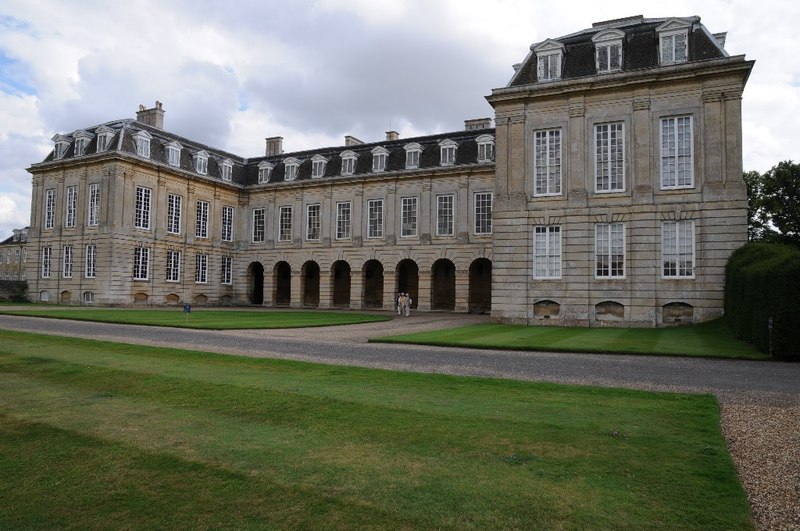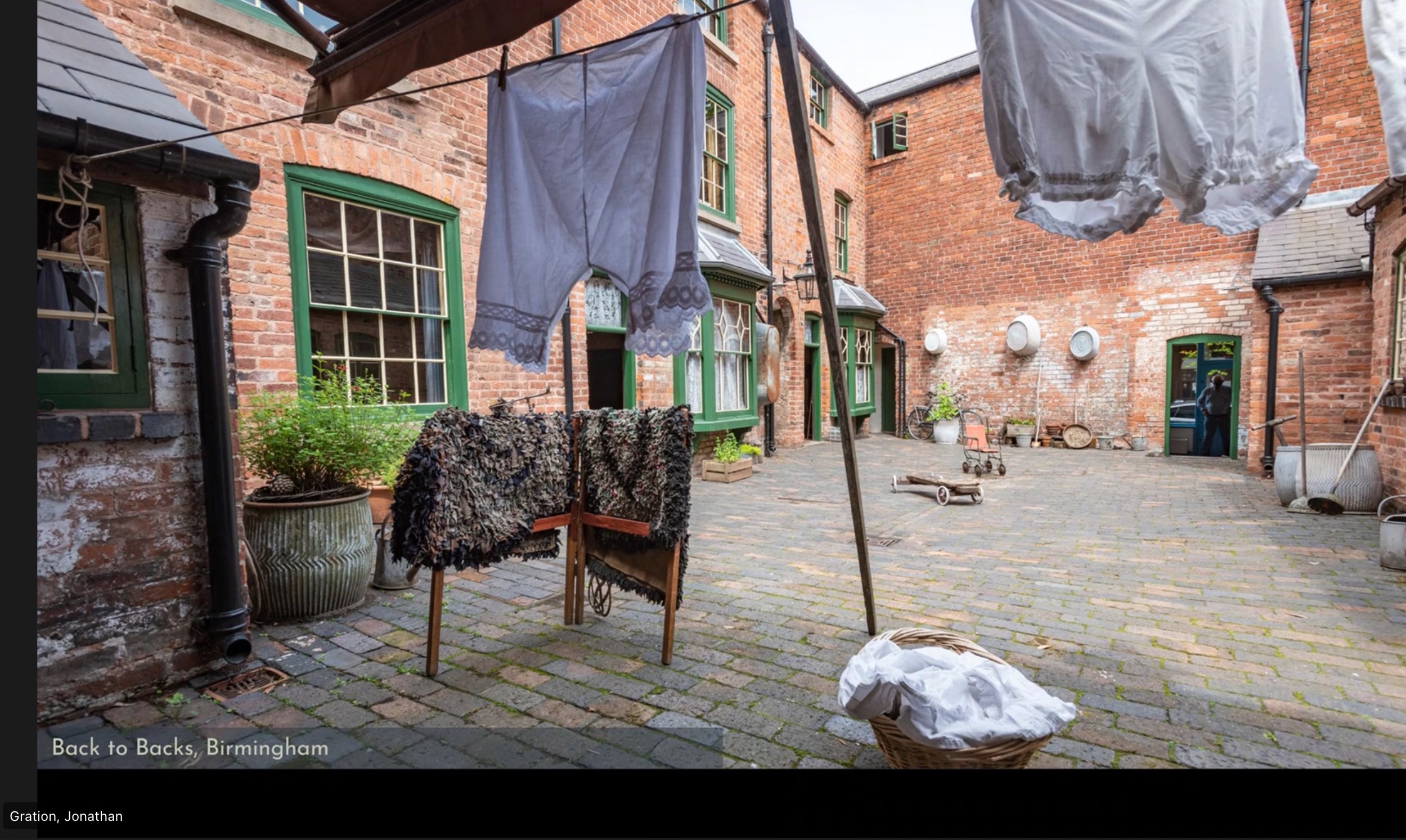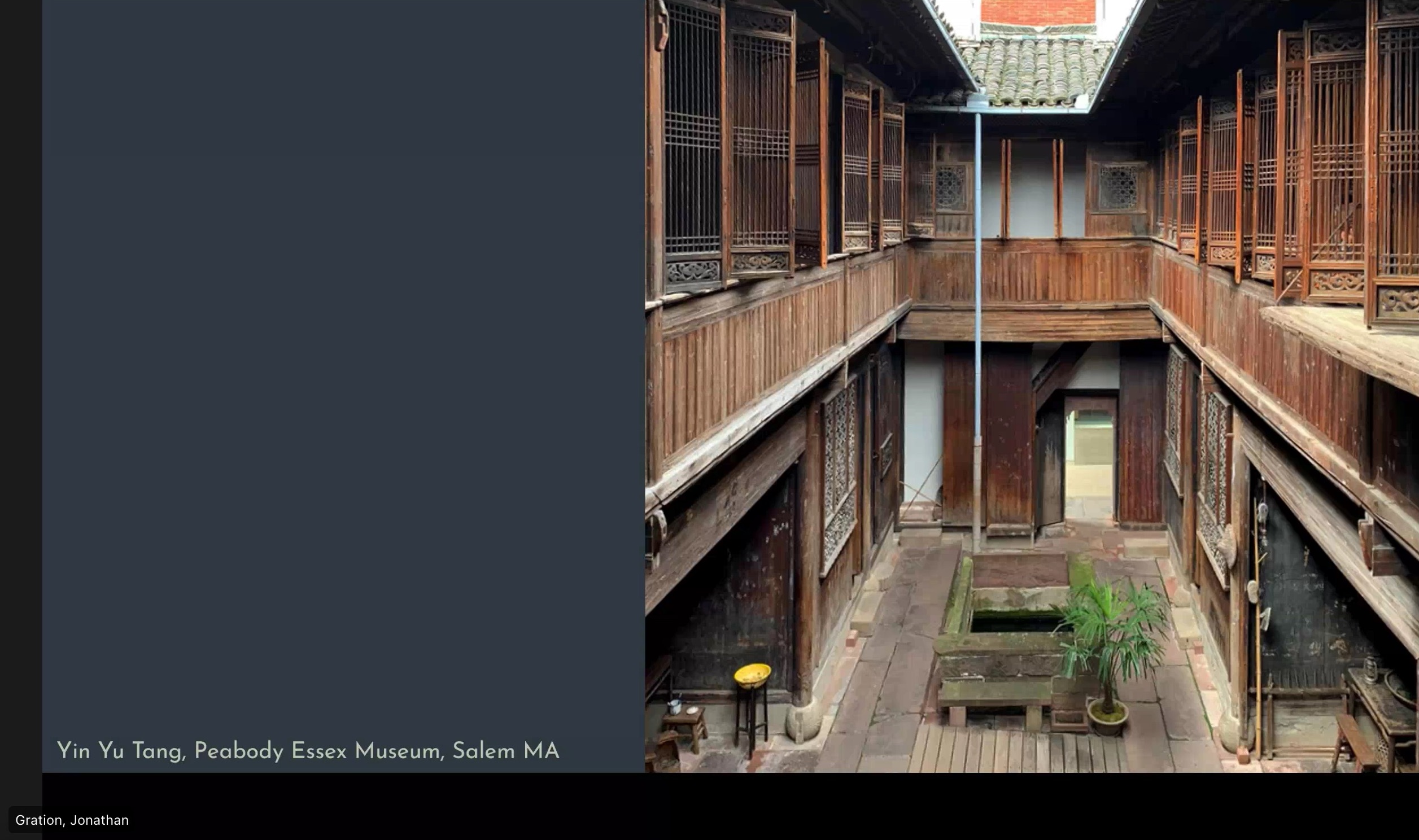Case Study
Immersive Experiences:
Historic Houses Museums as Complex Sites of Engagement
Dr Jonathan Gration, Design Historian and Museum Curator,
Lecturer, NTU
Background
This case study examines the role of digital reconstructions in enriching visitor engagement within historic house museums. It draws upon a broader research project investigating the use of digital interpretation in more than 400 historic houses, and using Boughton House near Kettering, England as a case study here. The project seeks to address how digital methodologies might unravel complex, layered narratives embedded in historic interiors and reveal the temporal and material transformations of such sites.
Historic interiors embody centuries of architectural evolution, domestic life, and cultural expression. Yet, the conservation and interpretation of these interiors have long been shaped by physical preservation practices that prioritise material stability over experiential engagement. Increasingly, heritage professionals and researchers have begun to explore how digital reconstructions can serve not merely as tools of restoration or documentation, but as means of enhancing public understanding and interpretation.
Historic houses present unique interpretive challenges. Unlike conventional museums, visitors are immersed within the object itself—the architectural and decorative ensemble of the home. Even minor interventions, such as safety features, lighting, or interpretive signage, risk disrupting the sense of authenticity that is central to the visitor experience. The core dilemma is therefore how to facilitate meaningful engagement without compromising the integrity and atmosphere of these historic interiors. Complicating interpretation further is the palimpsest nature of historic houses. Architectural and decorative elements accumulate over centuries, often blending seventeenth-century structures, eighteenth-century furnishings, nineteenth-century wallpapers, and modern repairs. Traditional interpretation frequently privileges a single historical period, obscuring the layered narratives that define the site. Digital and creative interpretive approaches offer opportunities to reveal these complexities, deepening visitors’ understanding and fostering a more engaging, memorable experience.This case study examines the role of digital reconstructions in enriching visitor engagement within historic house museums. It draws upon a broader research project investigating the use of digital interpretation in more than 300 historic houses, and using Boughton House near Kettering, England as a case study here. The project seeks to address how digital methodologies might unravel complex, layered narratives embedded in historic interiors and reveal the temporal and material transformations of such sites.
Resources
Rethinking Heritage Futures, Online Workshop “Improving the Visitor Experience”, 27 November 2024, Nottingham Trent University (NTU), Communication University of China (CUC).
Approches
The research set out to investigate how digital reconstructions could illuminate these complex, multi-layered narratives within historic house museums. The project initially focused on existing uses of digital reconstructions in related disciplines such as archaeology and art history, where virtual modelling has been effectively deployed to visualise lost structures and contextualise artefacts. Yet, surprisingly few such applications existed within the context of historic interiors.
Using Boughton House as a principal case study, the project examined how digital tools might trace the architectural evolution of spaces and reveal changes over time—alterations in layout, decoration, and function. The central question guiding this inquiry was: to what extent can digital engagement deepen the visitor’s understanding of a house museum without compromising its authenticity?
This inquiry expanded into a comparative study of 372 historic house museums across 15 countries, encompassing over 6,000 interiors and 85,000 images. The research sought to define how these museums operate, how they interpret their collections, and the extent to which they employ digital or sensory engagement techniques.
Findings and Analysis
The study revealed that historic house museums, regardless of scale or status—from palatial residences to modest domestic dwellings—share similar interpretive challenges. Altering or introducing new technologies into such interiors almost always produces visual and experiential contrasts. Exhibitions such as the design installations at Chatsworth House or the Diwali illuminations at Kettleson Hall demonstrated both the potential and the tension inherent in layering contemporary interventions within historic settings.
Data from the international survey revealed striking patterns: while the average historic house museum represents over 320 years of domestic history, only 32% employ any form of diachronic presentation—that is, interpretation that acknowledges multiple historical phases. Even more revealing, fewer than 4% of interiors offer any direct engagement with layered narratives.
Moreover, digital and multisensory engagement remains minimal. The majority of house museums rely on traditional guided tours—accounting for roughly 90% of interpretive offerings. Only around 10% integrate sensory stimuli such as sound, smell, or tactile experiences as deliberate interpretive strategies, even though such approaches align naturally with the immersive character of domestic environments.
Equally notable is the prevalence of physical barriers: 96% of surveyed house museums employ stanchions or ropes to control visitor movement, limiting physical proximity to the objects and diminishing the sense of spatial immersion. This widespread practice, often inherited from museological convention rather than site-specific reasoning, symbolises the ongoing tension between access, preservation, and authenticity.
These findings underscore the need for a fundamental reconsideration of interpretive practice within historic house museums. The over-reliance on traditional, static methods—whether guided tours or physical demarcations—restricts opportunities for deeper, more sensory engagement. Digital reconstructions and mixed-reality technologies offer a way forward: they can reveal temporal depth, simulate environmental change, and enable interactive storytelling without physically altering fragile interiors.
However, the study also emphasises that successful digital engagement must begin with an understanding of the museum typology itself. Historic houses are not merely exhibition spaces; they are lived environments, inherently immersive, and already rich in sensory cues; digital interpretation should enhance rather than replace this immediacy—evoking soundscapes, natural light, and domestic smells that anchor the visitor in the lived reality of the past.
Funding models and management structures further complicate implementation. Ownership varies widely—from state-run institutions to privately occupied homes open for limited periods to meet conservation grant requirements. Consequently, the adoption of digital innovation depends on local resources, regulatory frameworks, and the willingness of stakeholders to balance conservation ethics with creative experimentation.
Challenges and Successes
Challenges
- Balancing authenticity and innovation: Integrating digital reconstructions within historic interiors raised concerns about maintaining the material and historical integrity of the spaces.
- Conservation constraints: Strict preservation guidelines often limit opportunities to introduce interactive or digital elements.
- Visitor engagement limitations: Traditional interpretive methods, such as guided tours and physical barriers (e.g., stanchions), restrict sensory immersion and spontaneous exploration.
- Financial and institutional barriers: Uneven access to funding, digital expertise, and governmental support creates disparities in how historic house museums implement new engagement strategies.
- Conceptual ambiguity: The lack of a consistent definition of what constitutes a “house museum” complicates comparative study and the development of best practices.
Successes
- Revealing layered narratives: Digital reconstructions successfully visualised the architectural and decorative evolution of historic interiors, making complex histories accessible to visitors.
- Enhancing authenticity through technology: Thoughtfully designed digital tools deepened visitor understanding without undermining the character of the physical space.
- Expanding sensory engagement: Experimental approaches introduced opportunities for multi-sensory interaction—through light, sound, or scent—fostering more immersive experiences.
- Establishing a comparative framework: The study’s survey of 372 house museums provided a foundation for understanding global patterns of engagement and management.
- Reframing the visitor experience: The research demonstrated that historic house museums can function as dynamic, living environments rather than static displays, redefining their interpretive and educational potential.
Discussion
This research demonstrates that while historic house museums possess extraordinary potential for immersive, multi-sensory interpretation, the field remains constrained by inherited conventions of display and preservation. Digital reconstruction, when used judiciously, can help disentangle the layered narratives of these spaces, offering visitors a richer, more holistic understanding of domestic history. Ultimately, enhancing visitor experience in historic houses requires a dual commitment: to respect the authenticity of the physical fabric while embracing the interpretive possibilities of the digital realm. By rethinking the relationship between visitor, object, and environment, heritage professionals can transform these deeply personal spaces into dynamic platforms for cultural connection and historical insight.
Further Resources
Websites:
Images
Image Credit: Dr Jonathan Gration, Transdisciplinary design historian, historic interiors conservator and museum specialist, Lecturer.


